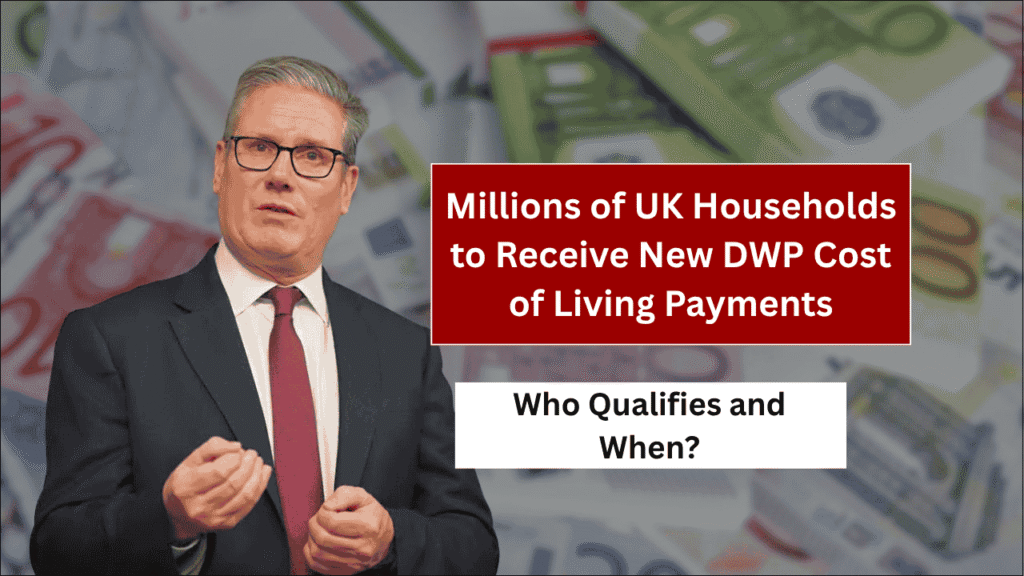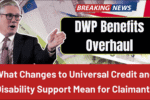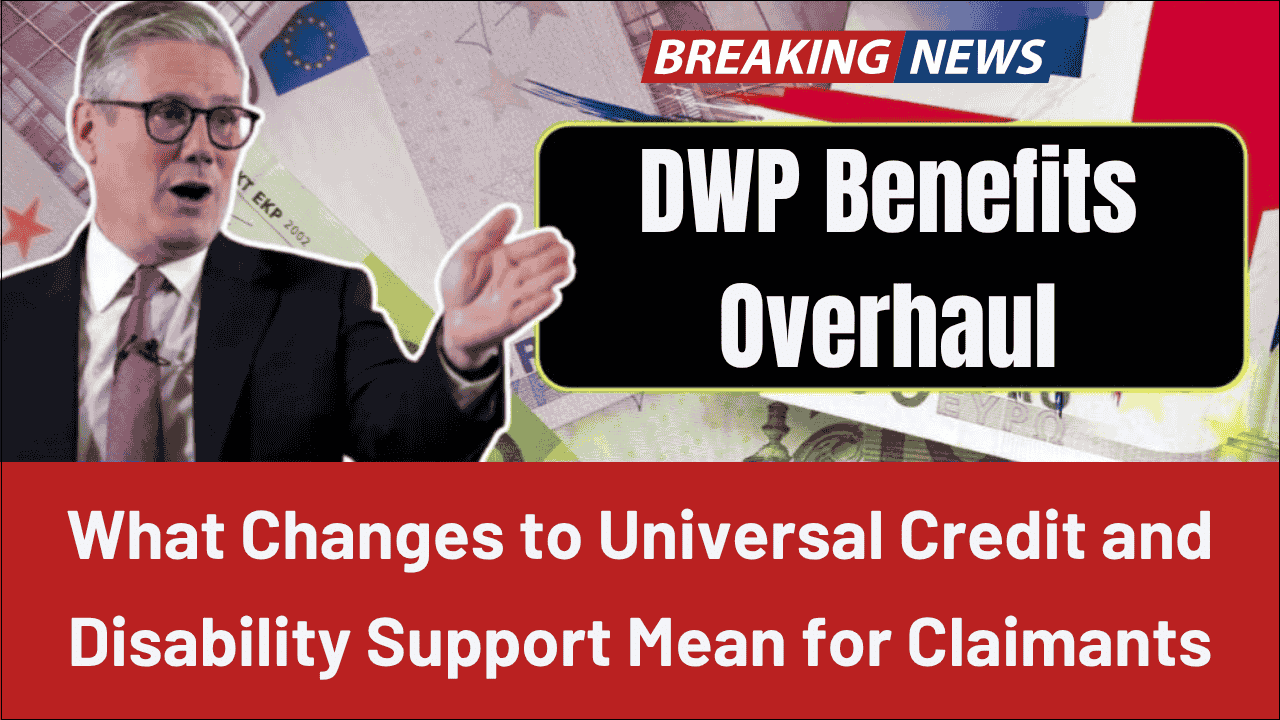
Millions of households across the United Kingdom are set to receive vital financial support as the Department for Work and Pensions (DWP) launches fresh Cost of Living Payments through the extended Household Support Fund (HSF). With inflation continuing to impact everyday essentials and energy costs remaining elevated, this renewed government initiative aims to provide crucial assistance to those struggling most with rising living expenses.
The announcement comes as welcome relief for families and individuals who have been finding it increasingly difficult to balance household budgets amid persistent economic pressures. Here’s everything you need to know about these new payments, including eligibility criteria, application processes, and what support is available.
Understanding the New Cost of Living Payments
The latest round of Cost of Living Payments represents a significant expansion of government support, designed to reach vulnerable households through local council distribution networks. These payments are structured as tax-free grants that recipients never need to repay, providing genuine financial relief rather than additional debt burden.
Unlike previous national schemes, this initiative operates through local authorities, allowing councils to tailor support to their specific communities’ needs. This localized approach enables more flexible distribution methods and ensures assistance reaches those who need it most within each area.
Key Programme Details
| Programme Element | Specifications |
|---|---|
| Fund Name | Household Support Fund (HSF) |
| Programme Duration | 1 April 2025 – 31 March 2026 |
| Administration | Local councils with DWP funding |
| Maximum Payment | Up to £200 per household |
| Target Recipients | Low-income and benefit-claiming residents |
| Support Types | Cash transfers, vouchers, essential goods |
| Application Route | Through local council services |
| Processing Time | 6–8 weeks after approval |
Eligibility Criteria: Who Can Apply?
The eligibility requirements for these Cost of Living Payments are designed to identify households genuinely struggling with essential expenses. While specific criteria may vary slightly between local authorities, most councils apply consistent standards when assessing applications.
Primary Qualification Factors
| Eligibility Category | Specific Requirements |
|---|---|
| Income Threshold | Low household income relative to local standards |
| Benefit Recipients | Currently claiming Universal Credit, Housing Benefit, or other means-tested benefits |
| Essential Needs | Demonstrable difficulty covering basic necessities like food or heating |
| Financial Resources | Limited or no savings available for emergency expenses |
| Previous Support | No recent assistance from overlapping government schemes |
| Household Composition | Consideration given to family size and dependent children |
Importantly, having received previous Cost of Living support doesn’t automatically disqualify applicants. Many councils recognize that financial circumstances can deteriorate over time, and some even permit multiple applications within the programme year for households experiencing ongoing hardship.
Additional Considerations
Local councils maintain flexibility to consider unique circumstances that may not fit standard criteria. This includes households experiencing sudden income reductions, unexpected expenses due to health issues, or other emergency situations that have created financial vulnerability.
What the Payments Cover
These Cost of Living Payments are specifically designed to address fundamental household needs, ensuring families can maintain basic living standards during financially challenging periods. The support is intentionally broad to accommodate different types of essential expenses.
Approved Uses for Payment Funds
| Expense Category | Specific Items Covered |
|---|---|
| Energy Costs | Heating, electricity, gas bills, and prepaid meter top-ups |
| Food and Nutrition | Grocery shopping, essential food items, and basic nutrition needs |
| Personal Care | Toiletries, hygiene products, and basic clothing requirements |
| Heating Support | Cold-weather essentials like warm bedding, portable heaters, or bottled gas |
| Emergency Utilities | Priority support for elderly or disabled individuals facing utility disconnection |
| Essential Household Items | Basic furniture, appliances, or household necessities |
It’s important to note that these payments cannot be used for mortgage payments or rent arrears. However, homeowners remain eligible for support with energy costs and food expenses, ensuring they can access help with other essential needs.
Payment Methods and Distribution
Local councils have been granted flexibility in how they distribute approved support, allowing them to choose methods that work best for their communities and individual circumstances. This approach ensures recipients receive assistance in the most practical format for their situation.
Distribution Options
| Payment Method | Description |
|---|---|
| Direct Bank Transfer | Electronic payment directly to recipient’s bank account |
| Retail Vouchers | Supermarket or utility company vouchers for specific purchases |
| Essential Goods Delivery | Physical items like clothing, food parcels, or energy cards delivered directly |
| Prepaid Cards | Loaded payment cards for flexible spending on approved items |
| Service Credits | Direct payments to utility companies or other service providers |
The chosen method often depends on the recipient’s circumstances, the type of support needed, and the council’s available resources. Most authorities aim to provide the most convenient option for each individual situation.
Application Process: Step-by-Step Guide
Applying for Cost of Living Payments requires gathering appropriate documentation and following your local council’s specific procedures. While processes vary between authorities, most follow similar basic steps.
Standard Application Steps
- Research Local Requirements: Visit your council’s website or check gov.uk for area-specific eligibility criteria and required documentation
- Gather Documentation: Collect benefit letters, recent utility bills, bank statements, and proof of hardship
- Complete Application: Fill out online forms or visit council offices for in-person applications
- Submit Supporting Evidence: Provide all required paperwork and additional documentation as requested
- Await Processing: Allow 6-8 weeks for application review and approval decision
- Receive Confirmation: Get notification of approval status and payment method details
Required Documentation
Most councils request similar documentation to verify eligibility and need:
- Current benefit award letters or Universal Credit statements
- Recent utility bills showing account balances or arrears
- Bank statements demonstrating limited financial resources
- Proof of household composition and dependent children
- Evidence of specific hardship or emergency circumstances
Reapplication Opportunities
Many local authorities recognize that financial difficulties may persist or worsen throughout the programme year. Consequently, numerous councils permit multiple applications, though policies vary significantly between areas.
Reapplication Policies
| Council Approach | Application Frequency |
|---|---|
| Multiple Applications Allowed | Two or more applications per household within programme year |
| One-Time Support Only | Single application per household for entire programme duration |
| Circumstance-Based | Additional applications considered for worsening conditions |
| Time-Limited Restrictions | Minimum waiting periods between applications |
Check directly with your local authority to understand their specific reapplication policies and any waiting periods that may apply.
Official Resources and Support
Staying informed about Cost of Living Payments requires accessing reliable, official sources that provide accurate and up-to-date information about eligibility, applications, and payment schedules.
Key Official Websites
- GOV.UK Household Support Fund: https://www.gov.uk/household-support-fund
- DWP Cost of Living Support: https://www.gov.uk/government/organisations/department-for-work-pensions
- Citizens Advice Financial Support: https://www.citizensadvice.org.uk
- Turn2us Benefits Information: https://www.turn2us.org.uk
Additional Support Available
Beyond Cost of Living Payments, various other support schemes continue to operate, providing comprehensive assistance for households facing different types of financial challenges.
These include energy efficiency programmes, food bank networks, debt advice services, and specialized support for vulnerable groups such as elderly residents or families with young children.
Timeline and Next Steps
The current Household Support Fund programme runs until 31 March 2026, providing an extended window for applications and support distribution. However, demand typically exceeds available funding, making early applications advisable.
Local councils will continue accepting applications throughout the programme period, though some may temporarily pause intake if they reach capacity limits. Regular monitoring of your local authority’s website ensures you stay informed about application availability.
Conclusion
These new DWP Cost of Living Payments through the Household Support Fund represent a crucial lifeline for millions of UK households struggling with rising costs. With up to £200 available per household and flexible distribution methods, the programme offers practical support when it’s needed most.
Don’t delay if you’re experiencing financial difficulties—check your eligibility and submit your application through your local council as soon as possible. This support could provide the crucial breathing space needed to manage through challenging financial periods.
Frequently Asked Questions
How much can I receive from the Cost of Living Payment? You can receive up to £200, depending on your local council’s allocation and your circumstances.
Who actually provides these payments? Your local council distributes the payments using funding provided by the DWP.
Can I apply more than once during the programme year? Yes, many councils allow multiple applications if your circumstances warrant additional support.
What documents do I need for my application? You’ll typically need benefit letters, utility bills, and evidence of financial hardship or low income.







